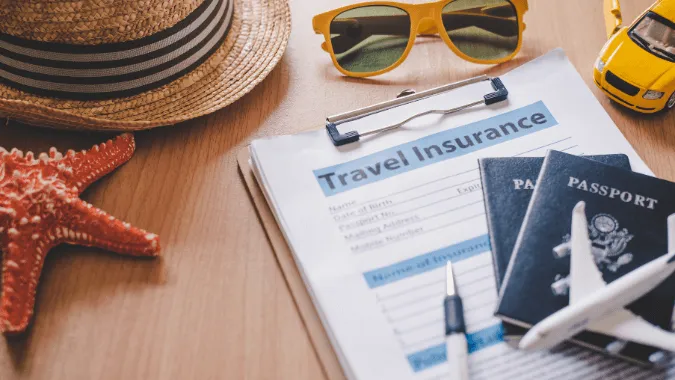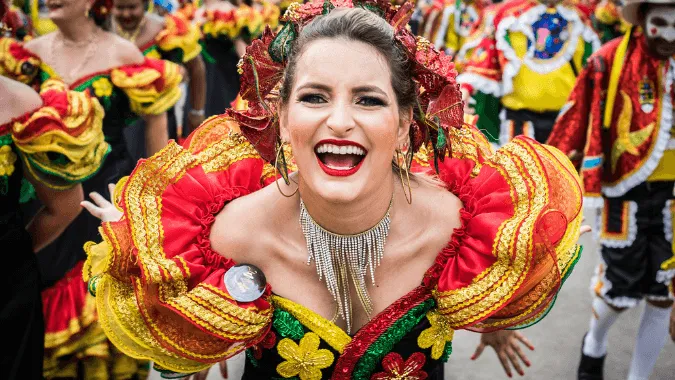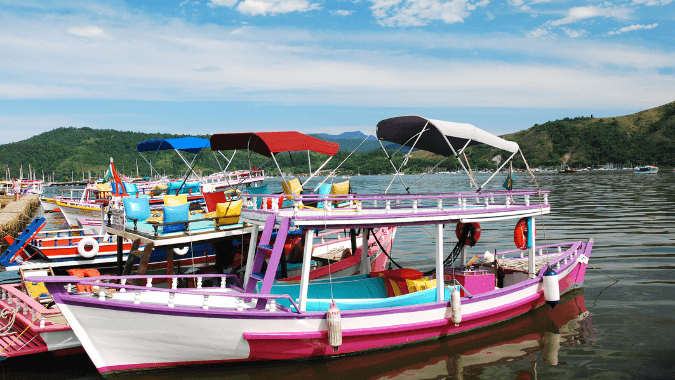Argentina
What to do in La Plata and how to travel it?
Tags:
Upon reaching La Plata, located 60 km from the Federal Capital, you will easily recognize it for its smell of linden. Trees abound throughout the city and when they bloom they fill the air with their characteristic perfume. Beware those with allergies! You’ll also recognize it for its famous diagonal streets, at first glance, they can make you dizzy but once you learn to use them you can make short cuts and save a few blocks. La Plata was founded in 1882 and is characterized as one of the few cities in the world to be designed before being built. It represents an urban planning model with a perfect grid, with a central point - the Plaza Moreno - with diagonals that cross the city from north-south and east-west and numerous green spaces. We, the Platenses, love to know that every six blocks there is a place to sprawl out in the grass. Here we show you, What to do in La Plata and how to travel it? ![]()
![]()
![]()
![]()
![]()
![]()

The city of La Plata was founded in 1882 and is characterized as one of the few cities in the world to be designed before being built / Photo: Gilda Selis
In addition, historically, it was a university city that offers a great educational, scientific and cultural center of excellence. At the UNLP (National University of La Plata) many of the relations between Platensesand people from the interior come together. Between courses and nights of study, great friendships that last a lifetime are usually. made. Today, the capital of the province of Buenos Aires, became a tourist, cultural and gastronomic center that attracts many visitors. In this article we tell you what to do in La Plata and how to explore it.
1. Visit the Foundational Axis

La Plata Cathedral is the largest neo-Gothic temple in South America / Photo: Fontain
There is no better way to get familiar with the city than walking through its streets, visiting its emblematic spots and buildings of both great historical and cultural value. We recommend starting with its Foundational Axis and a way to explore it is through the free walking tours that introduce you to the most interesting details and curiosities of the city. In La Plata, the “Quiero Recorrer (I Want to Walk)” guides await you with a green umbrella on the steps of the Cathedral to begin the journey on foot. You will be able visit the Plaza Moreno with the Founding Stone inside and the Cathedral located just opposite of it, the City Hall, the Argentine Theater, the Government House, the Dardo Rocha Passage, the Curutchet House, the National College and discover its architectural and hidden details. The guides will connect with you through their stories, the history and the current activity of the places visited. For example, you will learn that the Dardo Rocha Passage, in its beginning, it worked as a Railway Station and currently it is a cultural center where several dependencies of the Municipality and the Museum of Contemporary Art of Latin America (MACLA) and the Museum of Municipal Art (MUMART) operate. You will also discover that the Cathedral is the largest neo-Gothic temple in South America, and that from one of its towers, which is accessed by an elevator, you can see the perfect layout of the city and the Río de la Plata, that on clear days, one can catch a glimpse of the coast of Colonia del Sacramento in Uruguay.2. Discover the legends and Masonic mysteries

La Plata is full of stories of Masons and has a hidden dimension. Do you dare to discover it? / Photo: Gilda Selis
Another option is to get to know the city through routes that are not often visited by tourists. La Plata is full of stories of Masons and has a hidden dimension. Both its founder Dardo Rocha, and the engineer Pedro Benoit belonged to the lodge and left hidden symbols in the urban layout, in its monuments and the historical buildings. "La Plata, hidden city" is a group that is made up of historians and tour guides who make special visits telling the curiosities of the city's Masonic symbology, as well as the myths of ghosts and hidden places that are usually overlooked on the usual routes. Topics such as, important personalities who have visited the city, hidden tunnels in buildings and even crimes and criminal acts are covered, too. The tours are done on foot, last two and a half hours and are suspended if it rains.3. Explore the new gastronomic facet that promises

The Provincial Station was rescued and became a cultural area that promotes workshops, exhibitions and cultural proposals / Photo: Gilda Selis
The capital of Buenos Aires has gained notoriety in the last five years for becoming a new gastronomic center very close to CABA where a wide range of bars, restaurants, organic fairs, ice cream parlors and breweries are concentrated in different areas. The most traditional area is the downtown area known as the Diagonal 74 corridor and 51-53 avenues where you can taste the outstanding Platense craft beer and find a wide variety of fast food places, traditional cafes and elegant restaurants. As for the gastronomic hub Meridiano V, it extends from 13th Street to 19th and from 66th to 72nd, and the heart of it is in the Provincial Station. This building, over 100 years old, was the old “La Plata” station of the Provincial Railroad. The residents of the neighborhood rescued the once abandoned station from oblivion and turned it into a cultural area that promotes workshops, exhibitions and cultural programs, a gastronomic strip of bars, restaurants and craft fairs amongst cobbled streets, low houses and old street lamps. The gastronomic movement also extends into the northern area that includes the town of City Bell, just 15 minutes from downtown La Plata. It is centered around Cantilo Street (the main one) where there are many restaurants, bars and coffee shops with glamor and lots of green in recycled English houses that mix the classic with the modern.4. Breathe pure air in the green oasis of the Paseo del Bosque

The Paseo del Bosque has an area of 60 hectares with trails for hiking or biking and with the whole family / Photo: Gilda Selis
The Paseo del Bosque is another place to visit in the city of La Plata, both for children and adults. This green space is an oasis within the city of diagonals. It has an area of 60 hectares with hiking trails or bike rides between oaks, willows, lime and eucalyptus trees. In the artificial lake there are boats that are rented and ideal for children. Around it, there is the Planetarium and the Museum of Natural Sciences, the largest of its kind in Latin America with 21 rooms where important collections of fossils from the Paleozoic, Mesozoic and Cenozoic Era, representatives of extinct mammals more than 10,000 are exhibited years and more than 3 million objects that show the evolution and diversity of nature. And for football lovers, you can tour the Gimnasia & Esgrima de la Plata field and the Estudiantes stadium (under construction), the two most important clubs in the city.5. Be a child again in the Children’s Republic

The Children’s Republic is the first educational theme park in Latin America dedicated to children / Photo: Daytours4u
The Children’s Republic is located on General Belgrano road and 501st street in the town of Gonnet, just 10 minutes from the city center, and is easily accessed by bus. This is the first educational theme park in Latin America dedicated to the smallest since it was founded. It exists so that children learn to exercise their rights and obligations as citizens of a democratic country in a field of recreation and creativity. In an area of 53 hectares, it has three areas: the urban one (with buildings of interest with a mixture of medieval, Islamic and European styles), the rural one where you can visit the animal farm, whose activities are oriented to the teaching of native flora and fauna and sports, composed of a playground and basketball courts, handball/racquet courts and amphitheater. An ancient myth says that Walt Disney visited the place and – surprised by its beauty - was inspired to build Disneyland later. Believe it or not! Info to take into account- How to get there from Buenos Aires
-
- By car: Take the Buenos Aires-La Plata highway “Dr. Ricardo Balbín also known as National Route No. 1. Toll must be paid.
- In collective: The former Plaza Group (now Mission Buenos Aires) and Costera Metropolitana are the two transport companies that make daily trips from La Plata to CABA with several daily frequencies.
- By train: From Constitución the Roca train leaves for La Plata Station (1 and 44) on a journey that lasts one hour and has several daily trains. It is the cheapest option.
- By private charter bus: There are services of private charter buses such as La Plata VIP, Lobos Bus or Vía La Plata that offer charters from La Plata to Capital and Capital to La Plata with fixed schedules.
- The SUBE card is used on all means of transport.
- To consult branches, routes and schedules of buses in La Plata, check the website Cual Bondi.
- To make the walk through the Masonic route write to: laplataciudadoculta@gmail.com or check schedules through their social media. It costs AR $ 150 per person.
- To know the days and times when the “Quiero recorrer (I want to travel)” tours, check thier social networks at Facebook or Instagram where they update announcements about the program. The service is based on a system of tips, giving the visitor the opportunity to set the price they deem appropriate.
- The Museum of Natural Sciences remains open from Tuesday to Sunday from 10 a.m. to 6 p.m. General admission costs AR $ 50 and children under 12, retirees and national university students enter free. On Tuesdays the entrance is free for all public.
- The Children’s Republic opens every day and holidays from 10 am to 6 pm. Admission is AR $ 20 and children under 8 enter for free.
By: Gilda Selis, travel journalist. Author of the blog Mi Bitácora de Viajes and the book En Movimiento, geografía interna de una chica que viaja de acá para allá.
Tags:
Search
-
Exciting 4x4 route: São Luís and FortalezafromUS$1,014
-
Vila Gale Mares Resort All InclusivefromUS$100
-
Ecotourism in Chapada DiamantinafromUS$672
-
All inclusive Vila Gelé Cumbuco ResortfromUS$999
-
Full Day Cafayate Tour from SaltafromUS$68
-
Transfer Aeroparque - Buenos AiresfromUS$46
-
-
Transfer Ezeiza - AeroparquefromUS$91
-
-
Excursion to El Chaltén from El CalafatefromUS$153
-
-
-
-
-
-
-
-
-
-
-
Daytours4u © 2012-2019. Use of this website constitutes acceptance of the Terms & Conditions.
Open Chat
Hello, How May I Help You?



